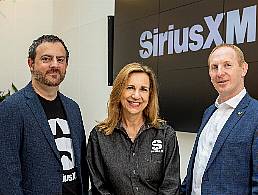From brain teasers to secret searches, more companies are incorporating unconventional methods to recruit the best talent. However, these methods are more than just a gimmick.
Dyson are looking for bright ambitious minds to join its team. But it’s not as simple as sending in an application and attending an interview. Instead, Dyson is looking for candidates who can solve its recruitment challenge, which is designed to test for key qualities the company looks for in employees.
Unorthodox? Yes. Difficult to prepare for? Definitely. Extremely rare? Not anymore. Dyson is far from the only company looking for new talent using unusual recruitment measures.
Global companies such as Google and L’Oréal are well known for having unconventional recruitment and interview strategies, from individual brain teasers to challenges against other candidates.
Interestingly, Google’s famous interview riddles have been replaced, as the company found no correlation between the successful candidates and their answers. However, while its interview process has become a combination of standardised, hypothetical, problem-solving questions and practical performance assessments, Google is still sourcing its talent using unorthodox methods.
Last year, a coder working on a project Googled ‘python lambda function list comprehension’. After several normal links appeared to give him the information he needed, the screen split and revealed a message that said: “You’re speaking our language. Up for a challenge?” After successfully completing the challenge, he was invited to submit his CV. Three months later, he was offered a job with Google.
Back in 2011, the British intelligence and security organisation, GCHQ designed a challenge that invited individuals to ‘crack the code.’ Successfully solving the challenge took people to a page revealing both the source of the code and the career opportunities GCHQ had in cyber security.
In 2013, Heineken came up with ‘The Candidate’ as a way of choosing the right person for an event and sponsorship internship.
Social media continues to be a popular method of recruitment, with LinkedIn using its own platform to allow candidates to apply with their profiles. In Ireland, Dublin pub Sober Lane requested job applications via Snapchat ahead of its opening in July 2014. It received over 2,700 applications.
The recruitment process continues to be refined by companies. Just this year, Deloitte announced it would reduce a lengthy, three-stage recruitment process into one day to suit millennial candidates, who will make up 75pc of the global workforce by 2025.
Back in May of this year, mobile payments company Stripe invited candidates to BYOT – bring your own team. This replaced the idea of hiring several individuals and hoping they worked well together. The thinking behind the experiment was to “hire molecules instead of atoms”, based on the idea that groups can have a “network effect” on each other, giving them a valuable advantage over individuals.
While some organisations might still prefer the traditional method of recruitment, it’s becoming more important to get creative. “Organisations have to work a lot harder than they have in the past to attract talent, as demand continues to outstrip supply of key skills not just in Ireland but globally,” says James Milligan of Hays Recruitment. “The most talented workers will not respond to advertisements on job boards like they did ten years ago. They are constantly being approached by in-house recruiters and agencies via social platforms.”
It’s all well and good to hear about the success stories of unusual recruitment methods from top companies and the importance of thinking outside the box. But for organisations looking for inspiration on doing something a little different to find their candidates without a huge financial investment, here are some things you can do.
Tips for recruiters
Adopt Google’s hypothetical standardised questions. Come up with a list of set interview questions that are based off the models: ‘Tell me about a time when you faced a problem in work and how you solved it’ or ‘What would you do in the following situation…’, for example. This will give you a better idea of how the candidate works, as opposed to how well they rote learned the list of their current responsibilities.
Where possible, put your candidates to the test. Whether it’s a piece of code, a set of data to analyse or a report to write, come up with a small-scale practical test for candidates that somewhat mirrors what they would need to do if they got the job.
Replace a group interview with a group challenge. It’s one thing to hear candidates say they’re good team players but it’s quite another to see it in action. In this situation, the task need not be directly related to the job itself, but it will select the team players as well as the natural leaders.
Try an open-house style meeting for applicants. A consultancy firm based in Toronto once received 1,200 applications for nine job openings. Instead of wading through all of the applications, the company sent an email to each applicant asking them to attend an open house. Only 400 showed up, narrowing the search down to those who really wanted it through ‘self-selection’.
Stalk your talent. As creepy as it sounds, a significant number of your dream candidates will probably already be employed, so a job advertisement might not be enough to tempt them. From Facebook and LinkedIn to Twitter and Google, it has never been easier to search for your perfect candidates yourself.
Looking for jobs in tech or science? Check out our Employer Profiles for information on companies hiring right now.




